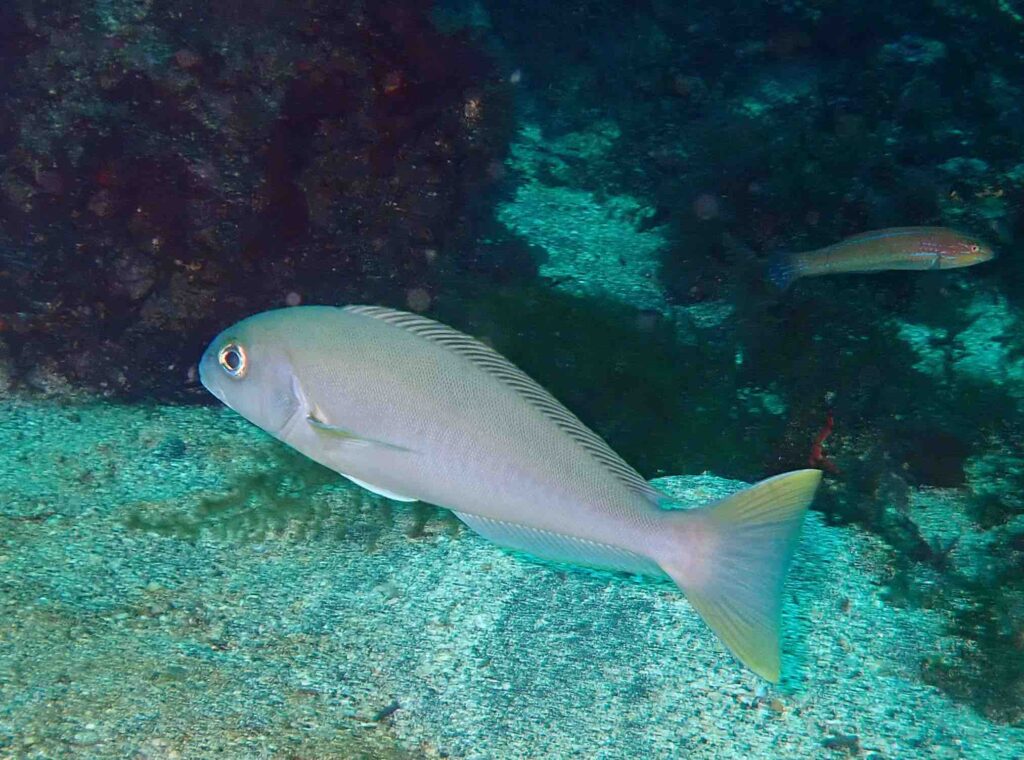Resumen
Comprender la dieta de dos especies demersales, el pez blanco del océano ( Caulolatilus princeps ) y la lubina de arena blanca ( Paralabrax albomaculatus ), proporciona información sobre las estrategias tróficas que han desarrollado para coexistir en arrecifes rocosos y hábitats de fondos blandos en la Reserva Marina de Galápagos. (RMG). Aplicamos dos técnicas complementarias (análisis de contenido estomacal y análisis de isótopos estables) para determinar los hábitos tróficos entre especies y categorías (sexo, etapas de vida y estaciones). Se realizaron muestreos en varios sitios de importancia pesquera dentro de la RMG entre 2017 y 2018, obteniendo 254 estómagos y 58 muestras de músculo para C. princeps, y 14 estómagos y 34 muestras de músculo para P. albomaculatus . El espectro trófico (composición de la dieta) de ambos depredadores contenía presas pelágicas y bentónicas. La anchoveta esbelta ( Anchoa ischana ) fue la presa más importante de C. princeps sin diferencias significativas en la dieta entre sexo, etapas de vida o estaciones ( p > 0.05); mientras que la presa más importante de P. albomaculatus era la lubina ( Pronotogrammus multifasciatus ). Las firmas de δ 13 C y δ 15 N fueron significativamente diferentes entre especies ( valor t = 11,81, p < 0,05 y valor t = 4,67, p <0,05, respectivamente), lo que sugiere diferencias en la fuente de carbono ( es decir , áreas de alimentación), así como en la preferencia por diferentes niveles tróficos ( es decir , diferentes presas). El análisis intraespecífico en C. princeps no mostró diferencias entre sexo, etapa de vida y estaciones ( p > 0,05). Las estrategias de alimentación fueron similares para ambos depredadores, con un nicho trófico reducido y una alta variabilidad entre las presas consumidas. Este trabajo proporciona información de referencia sobre dos especies de importancia ecológica y comercial dentro de la RMG y destaca el valor de los estudios tróficos para generar información útil para una gestión pesquera basada en ecosistemas.
Conoce más del artículo científico en el siguiente enlace: https://doi.org/10.1016/j.rsma.2024.103530






